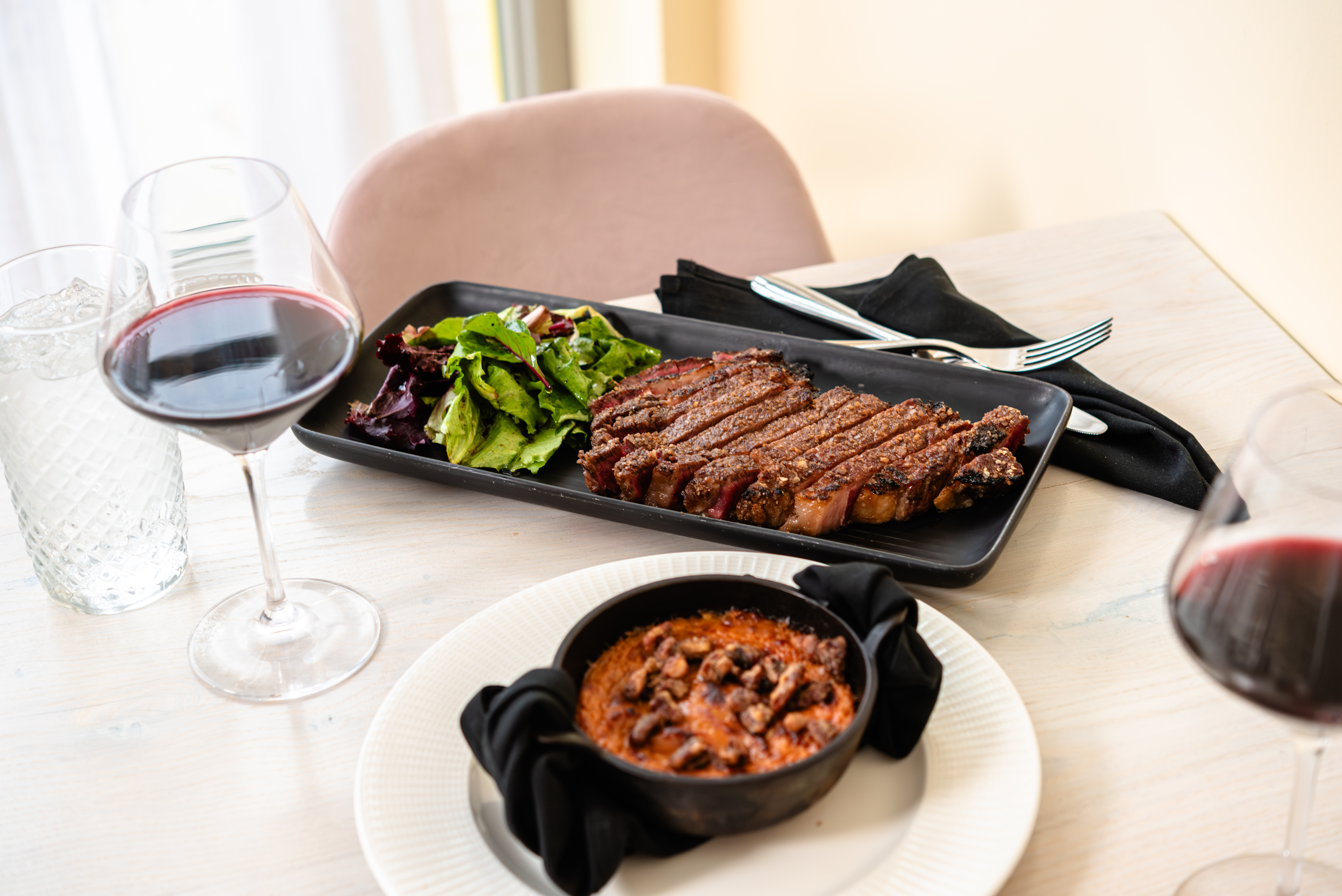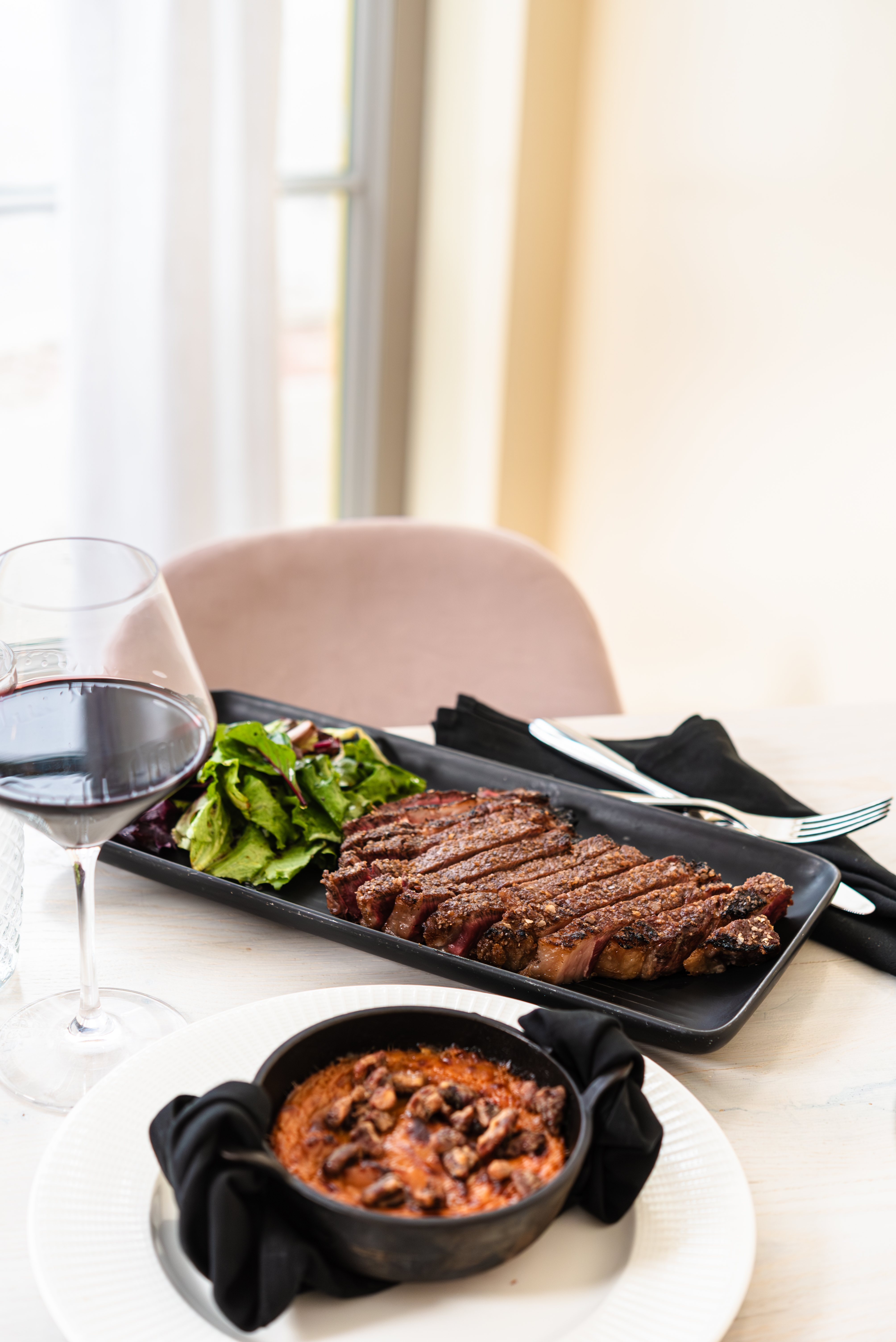Bitter
by Laura Taxel, Michelle Venorsky, John Long, Doug Trattner | Apr. 25, 2008 | 4:00 AM
Bitter in the wrong hands can be a train wreck. To be a success, bitter needs company. The pros at Pacific East know just how to package a bitter pill to make it a pleasure to swallow. Featured on this town’s only Malaysian menu, sautéed water spinach (also called swamp cabbage) is a lesson in bitter management. On its own, the leafy green vegetable can be mercilessly astringent. But sauté it with some onions, garlic, chiles, peppers and shrimp paste, as it is at this Coventry Road restaurant, and that irascible chalkiness at the back of the tongue melds into the poetry of the dish. Like the acidity in a fine glass of wine, it contributes to that elusive but essential quality we callbalance. Granted, fermented shrimp paste can smell a bit like, well, five-day-old fish. Couple that with a leafy green vegetable known to many as swamp cabbage and you begin to see how easily this dish could get derailed. Consider it a testament then to the folks at Pacific East, who prove daily that bitter is not only better, it’s best. 1763 Coventry Road, Cleveland Heights, (216) 320-2302
DT
Bittersweet Symphony
[by Laura Taxel]
I have a little brown glass bottle of bitters from the Velvet Tango Room in my refrigerator. The dark-colored tincture smells so enticing that I’m tempted to dab some on my wrists and behind my ears every time I open it. But the concentrated blend of herbs and spices in an alcohol base is meant for enhancing flavor, not feminine appeal. So I resist the impulse and instead inhale deeply, eyes closed to better focus on the intriguing scent tinged with cloves and cinnamon. This is my idea of aromatherapy.
Drink makers at the Velvet rely on the sharp, complex taste of the liquid to elevate certain classic cocktails from good to great. In a Manhattan, for example, bitters lessen the sweetness of the bourbon.
“Our bitters add character, like salt in the soup, and bring all the other elements together,” says the bar’s owner, Paulius Nasvytis. Without the requisite, precisely measured dash, there’s a missing dimension. Nasvytis uses only those from Fee Brothers in Upstate New York, a small, family-owned company that’s been in business for more than 100 years. Bartenders consider its bitters among the best available.
In the food world, smell and taste usually work in concert. What appeals to the nose pleases the palate. But despite their alluring scent, bitters have an unpleasant, musty, medicinal taste. Yet there’s no denying that this magical elixir has an uncanny ability to complement other ingredients and coax them to sing in harmony. The VTR’s pisco sour starts with a well shaken mix of Barsol grape brandy from Peru, tart citrus juice and a touch of sugar, but it’s not finished until a few drops of bitters are floated on the frothy crown. One sip and I know this drink is making sweet music, and it’s always my favorite song.
Light Bistro
LT
Downtown 140
JV
At the bottom of Sarava’s famous appetizer menu — “street plates,” they call them, 20 in all — you’ll find the Prince Edward Island mussels simmered in Xingu black beer and cooked with bits of linguica sausage. A heady mixture of the Brazilian beer’s bitter richness and the sausage’s meaty accent hit you first, then the briny taste of the mussel. Soak up the sharp, beery juice with wedges of garlic bread, and spear a piece of sausage and a mussel in the same forkful — the two tastes complement each other well. 13225 Shaker Square, Cleveland, (216) 295-1200
Erick Trickey
bitter me than you
The bitter clan welcomes the leafy green family with stems wide open. Whether it’s arugula or mustard greens, kale, escarole or watercress, salad fanatics among us know when they bite into a salad, it’s gonna bite back. No family, however, is a homogenous whole — and no one realizes that better than farmer Lee Jones, head of The Chef’s Garden. His amazing collection of veggies, herbs, fruits and microgreens has become a mecca for chefs throughout the country. Whether it’s a local chef driving in from Cleveland or a renowned cook flying in on a private jet, they come to Huron to pay homage and sample the latest and greatest from Jones’ gardens. Here, we address —and go beyond — the greens’ bitter stereotype.
JL
| Salt doesn’t just come from the sea — it also grows in The Chef’s Garden. Jones grows Verde Crystal Lettuce, whose crunchy, velvety, bright-green leaves are imbued with a salty flavor. Chez Francois executive chef John D’Amico tosses the lettuce into his mix of greens, giving diners a salty tang on the back of the palate. | |
| Red Ribbon Sorrel is a sour plant. The leaves are tart, with a little sweetness and a crunchy texture. As executive chef at The Chef’s Garden, Johannes Klapdohr has the ultimate resource at his disposal, and he takes full advantage. His list of possibilities for sorrel alone could fill a cookbook. Some of his favorite uses include as a garnish for salmon and as a filler for rice paper spring rolls. | |
| Epazote has been used for centuries in Mexico. It’s mildly bitter, with a citrusy flavor and a eucalyptus-menthol aftertaste. Mexican and Caribbean chefs often blend it with cumin and cilantro and use it to season fish, corn, black beans and mushrooms. Chef Bob Buehner of Stages Restaurant at the Cleveland Play House has been known to add it to his house-made oil, which he drizzles on soups and meat. | |
|
Anise hyssop has slightly fuzzy green leaves with touches of purple on its stems. It is a little crunchy and is very sweet, with a licorice finish. Beekeepers use it to make anise-flavored honey. The plant is part of a packet of veggies The Chef’s Garden sells, and it’s used in everything from salads to garnishes.
|
Trending
-
1
-
2
-
3
-
4
-
5










